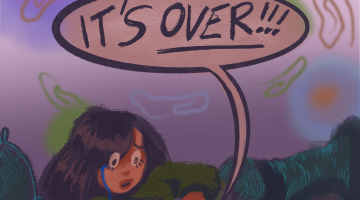Construction on campus impedes everyday life for all on campus, but the disabled community is certainly the most affected and the least considered when it comes to accessibility.
This summer, ProPublica revealed the university has seven open investigations — six of them in regard to disability and accessibility violations. All of the investigations were opened in 2015 or 2016.
Accessibility issues are anything but new on campus. In 2017, the university was forced to spend almost $700,000 to fix accessibility mistakes after a $14 million renovation to Mackay Stadium failed to consider fans in wheelchairs.
“I saw the back of the players’ heads, their butts, not the field,” wheelchair-bound ticket holder Joe Bohl said to the Reno Gazette-Journal in 2017.
Last year, it was reported to the Chief Diversity officer that braille signs around campus were sometimes wrong or mislabeled, making it difficult for blind students to get around.
Too often in our society, the disabled are disregarded and forgotten. When a construction fence goes up and blocks a wheelchair ramp and the rest of us get annoyed by an increase in congestion in the walkways, these students wonder how they will get to class. It takes a lot more effort for them to do the things abled body people do every day without thinking about it, and because of this, their problems are often ignored. On top of physical disabilities, there are disabilities that aren’t seen that need to be considered as well.
The Disability Resource Center does a lot to help these students when it comes to accessibility by finding class schedules that require little to no maneuvering between buildings, allowing them to focus on the content of the class, not how they are going to get there. This is something the entire university needs to get behind. Accessibility isn’t an issue that only impacts those with physical disabilities, it should bother everyone.
Our campus is old and needs to be renovated, but when ramps and walkways are closed off the construction isn’t benefiting anyone. People who have disabilities that are exacerbated by excessive walking are forced to try to find a parking spot close enough to their classes, but usually can’t. This isn’t an issue with parking services, this is an issue due to the fact that this university has too many ongoing projects that have altered disabled parking on this campus.
There is no reason why a student should have to park in the Whalen parking garage to walk to Ansari because all four of the disabled spots behind Scrugham Engineering and Mines are occupied. The other parking lot that allowed you to get to middle campus easily was demolished when construction on the new fine arts building began.
It is time for the university to become universally designed. Universal design is the National Disability Authority definition of “design and composition of an environment so that it can be accessed, understood and used to the greatest extent possible by all people regardless of their age, size, ability or disability.”
With the increase of construction and expansion of the university happening rapidly, there is no reason for the new buildings not to be universally designed. We understand the regulations and standards have changed according to the Americans with Disabilities Act in the years since other buildings have been built on campus, but the ADA standards should be considered the minimum now. The university should be reaching beyond those standards to include any and all people.
People with disabilities are constantly being treated as second-class citizens. As university student Sophie Coudurier points out, the wheelchair access ramp is almost always in the back of the building, and Braille lettering isn’t available on the outside of buildings for blind students to know where they are. This is an injustice to the disabled community, and if abled body people were treated like this, there would be riots and protests. No one should be treated like this, and it’s time to stop separating the disabled from the abled and integrate everyone into universal design so everyone can coexist equally.
The Nevada Sagebrush editorial board can be reached at mpurdue@sagebrush.unr.edu and on Twitter @NevadaSagebrush.










